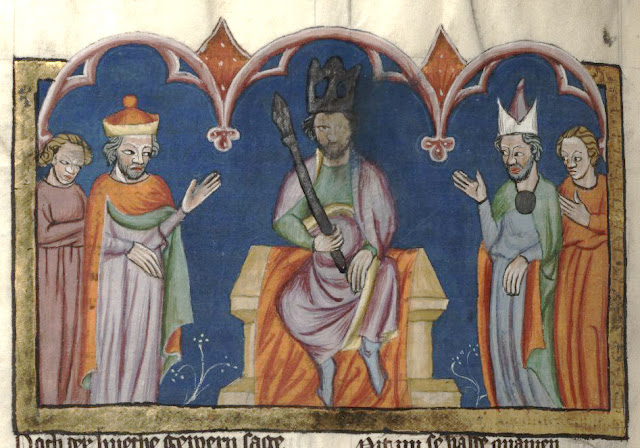TOPIC OF THE BLOG:-
The blog is a part of a Thinking Activity thAct:- A&A by John Dryden and given by Dilip sir (Click here for Dilip Barad's Blog) from English Department MKBU, Bhavnagar. In this blog I am going to discuss some questions from question bank of A&A given in Material website (Click here). For lactures and video on A&A by Dilip sir Click here.
JOHN DRYDEN:-
- Absalom and Achitophel (1681)
- Annus Mirabilis (1667)
- Astraea Redux (1660)
- Aureng-Zebe (1675)
- Fables Ancient and Modern (1700)
- King Arthur (Librettist and lyricist, John Dryden) (1691)
- All for Love (1677)
- Mac Flecknoe (1678)
- Marriage à-la-Mode (1673)
- Of Dramatic Poesie, an Essay (1668)
- Religio Laici; or A Layman’s Faith (1682)
- Secret Love, or the Maiden Queen (1668)
- The Conquest of Granada of the Spaniards (1670)
- The Hind and the Panther (1687)
- The Indian Emperour (1665)
- The Indian Queen (1664)
- The Medall (1682)
- The Wild Gallant (1669)
- To His Sacred Majesty (1661)
DRYDEN AS THE FIRST COMPARATIVE AND NATIONALISTIC CRITIC:-
Dryden added a new dimension to criticism by introducing method of comparative analysis. His comparative study of Greek, Roman, French and English writers shows his knowledge and his sensitivity to literature. Scott James writes in this regard; "Dryden had not only read and digested Sophocles and Euripides, Theocritus and Virgil (Tragedians); he had also read and digested Shakespeare, Ben Johnson and Fletcher." Dryden compares modern literature with Greek and Latin. He said that the difference between classical literature and English literature is not only that of language. To him, is that time passes the development of state, the taste and the character of people changes notably.
ABSALOM AND ACHITOPHEL:-
Poem:- Absalom and Achitophel
Poet:- John Dryden
Published:- 1681
Setting:- Israel, during the reign of King David
Era:- Restoration Age
Genre:- Satire, Poetry
Rhyme Scheme:- Heroic Couplet
Antagonist:- Achitophel
Point of View: Third-Person Omniscient
Rhyme Scheme:- AABB - Imbic Pentameter
For the original poem Visit Poetry Foundation (Click here).
In Preface of Absalom and Achitophel Dryden claims that he is mere a historian but we can found through this poem that he created biblical story. Absalom and David are thinly veiled metaphors for Charles II of England and his illegitimate son, James Scott, 1st Duke of Monmouth. In the poem, Dryden implies that the real-life story of Charles and Monmouth is not yet over, and there is plenty of time for wisdom and mercy. (litcharts)
Dryden based his work on a biblical incident recorded in 2 Samuel 13–19. These chapters relate the story of King David’s favourite son Absalom and his false friend Achitophel (Ahithophel), who persuades Absalom to revolt against his father. (Britannica)
🌸 The second part of the poem is written by Nahum Tate (1652-1715) in 1682 and Dryden added some finishing lines.
CHARACTERS:-
ABSALOM:-
🪄 James Scott, Duke of Monmouth.
ACHITOPHEL:-
DAVID:-
🪄 The third king of Israel and Charles Second of England.
SAUL:-
DAVID'S BROTHER:-
🪄 James II, David's brother, in the poem there is no such character appear but refer multiple times.
CORAH:-
🪄 Titus Oates (1649 to 1705) was an English perjurer who fabricated the "Popish Plot", a supposed Catholic conspiracy to kill King Charles II.
SHIMEI:-




_(after)_-_James_Scott_(16491685),_Duke_of_Monmouth,_KG,_in_Garter_Robes_-_1171154_-_National_Trust.jpg)
~2.Jpeg)

_c._1768.jpg)














No comments:
Post a Comment
If you have any suggestions and doubts please let me know☺️